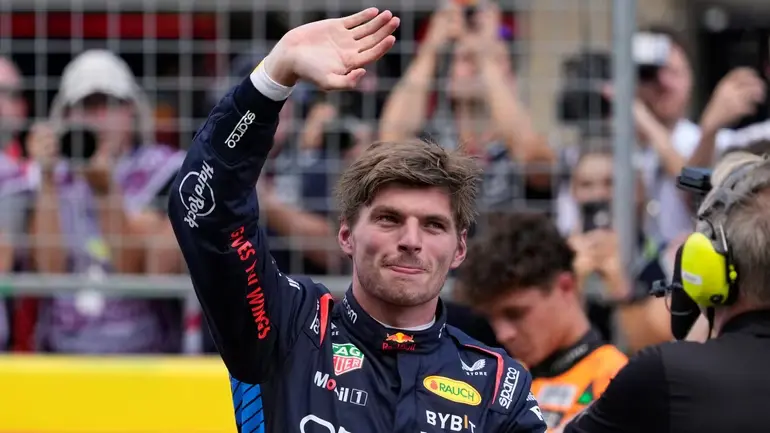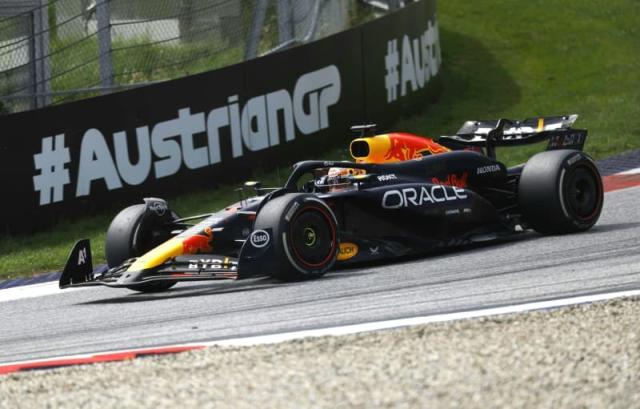No matter who was correct, Max Verstappen and Lando Norris's altercation at Turn 12 in Austin has soured Formula 1's reputation.
After the US Grand Prix, the focus once again moved to regulations, stewarding consistency, and track limits rather than praising Ferrari's spectacular one-two triumph or celebrating two top drivers battling on the edge.
Verstappen adhered to F1's racing regulations, but are they appropriate?
The incident sparked contrasting remarks from both parties. McLaren contended that drivers shouldn't be permitted to just push a rival off the road, while Red Bull pointed out that Norris had made an illegal overtake off the circuit, a view that the race officials adopted.
The current driving standards guidelines encourage the defending car on the inside to simply release the brakes and make sure it is ahead at the apex without having to give the car on the outside any room at the exit, as Verstappen has reportedly understood better than anyone else. This way of thinking makes overtaking around the outside even more difficult than it was already.
Because the Mercedes driver was the one who attacked and passed on the inside, the rules state that Russell was responsible for leaving a car's width for the Sauber at the exit. Mercedes was upset that Verstappen was not punished while Russell was for a similar offense that involved driving Valtteri Bottas away.

It's interesting to note that the rules, which include the need to drive safely and responsibly and be able to round corners within the track's bounds, are only written from the perspective of the attacking car. Because Verstappen didn't, Norris only received a five-second penalty instead of a ten-second one, which also explains why Norris wasn't punished for his fourth track-limits infraction.
The opening lap of a race is thus interpreted differently, with stewards adopting a far more laid-back "let them race" strategy. This implies that drivers are less scared to challenge one another in Turn 1 for fear of punishment, but it also makes it harder for viewers to spot consistency.
It is evident that the rules are merely meant to serve as a guideline for how the stewards might evaluate a specific occurrence. They allow for interpretation, which Red Bull and McLaren did not in this instance. According to Jonathan Noble's detailed explanation, those rules are expected to be widely adopted in 2025 at all FIA-sanctioned racing levels, including grassroots racing. However, they are now probably going to be discussed again.
But what if, in subsequent instances, the rules let the automobile that was attacking to remain ahead while being pushed off? Would there ultimately be more wheel-to-wheel competition inside the white lines as opposed to outside? Before the rules are included into the larger FIA playbook, that is a matter that F1 and the FIA will need to address in the upcoming months. However, many believe that the current method does not always encourage fair racing and is too ambiguous and subject to interpretation.
Read Also: Social Media's Secret Society of Formula 1
How long should it take stewards to decide?
McLaren also bemoaned the fact that, only minutes before the race ended, the FIA stewards called for Norris to be penalized. Andrea Stella, the team principal, believed that meant the stewards were unable to consider the opinions of both teams and drivers. "When the case is so difficult, like Lando and Max, just take the time, review it after the race and hear from the drivers, try to understand the subtleties," he stated.

Because the FIA and F1 want to make sure the proper driver is on the podium, the speedy decision-making has a special impact on cars that finish at the front. Stewards have the right to make a quick decision if they believe the evidence is sufficiently obvious since no one wants to see a driver take the rostrum only to be penalized and relegated hours after the race.
Is gravel the answer, and is this genuinely a track issue?
The 2023 Austrian Grand Prix was completely derailed by multiple track-limits violations, so the FIA made thoughtful adjustments for this year, including the addition of small gravel patches at multiple places. Oscar Piastri of McLaren was nevertheless harmed by a contentious track-limits call during qualifying, so the solution wasn't flawless.
However, the overall concept was sound. In order to ensure that curves naturally penalize drivers for going wide before they actually breach the track boundaries, gravel strips should be installed within an automobile's width of the white line. Would Norris still have continued his around-the-outside maneuver if Turn 12 had been lined with gravel? Would Verstappen have been less concerned with whether he would actually make the bend and more careless with how he released the brakes to ensure he would be ahead at the apex and earn the right to the corner?
The fences will take care of that on street circuits, but the fact that some circuits, like COTA, also hold bike racing may cause problems on natural road courses. However, the Red Bull Ring, which also accepts MotoGP, demonstrates that short-term or modular solutions may be put into place for comparatively little money.
Therefore, removing the decision from stewards' hands in the first place by allowing the track to determine natural boundaries is the solution that has been right in front of us the entire time, even though concerns about regulations and officiating consistency will be voiced.




